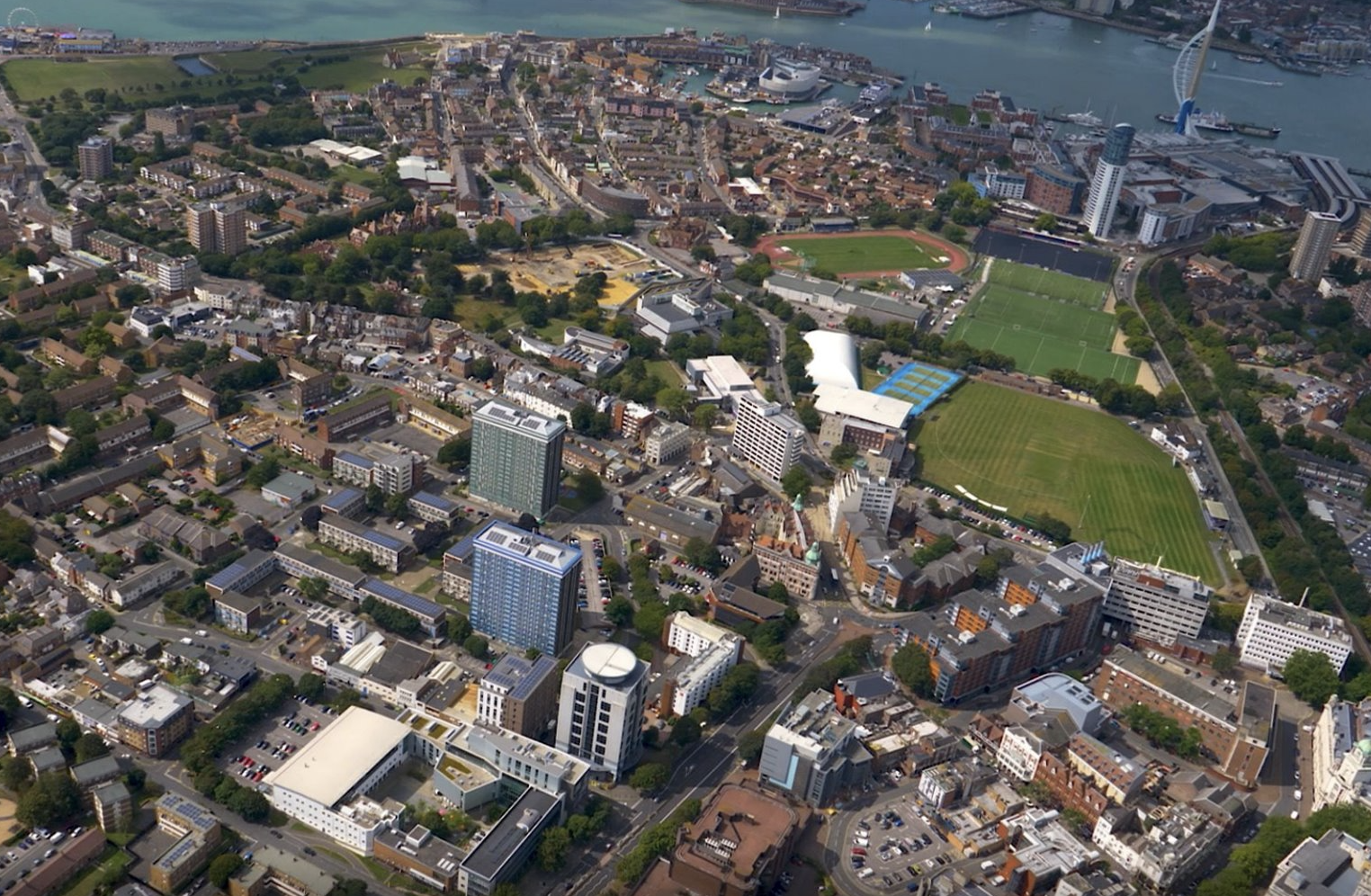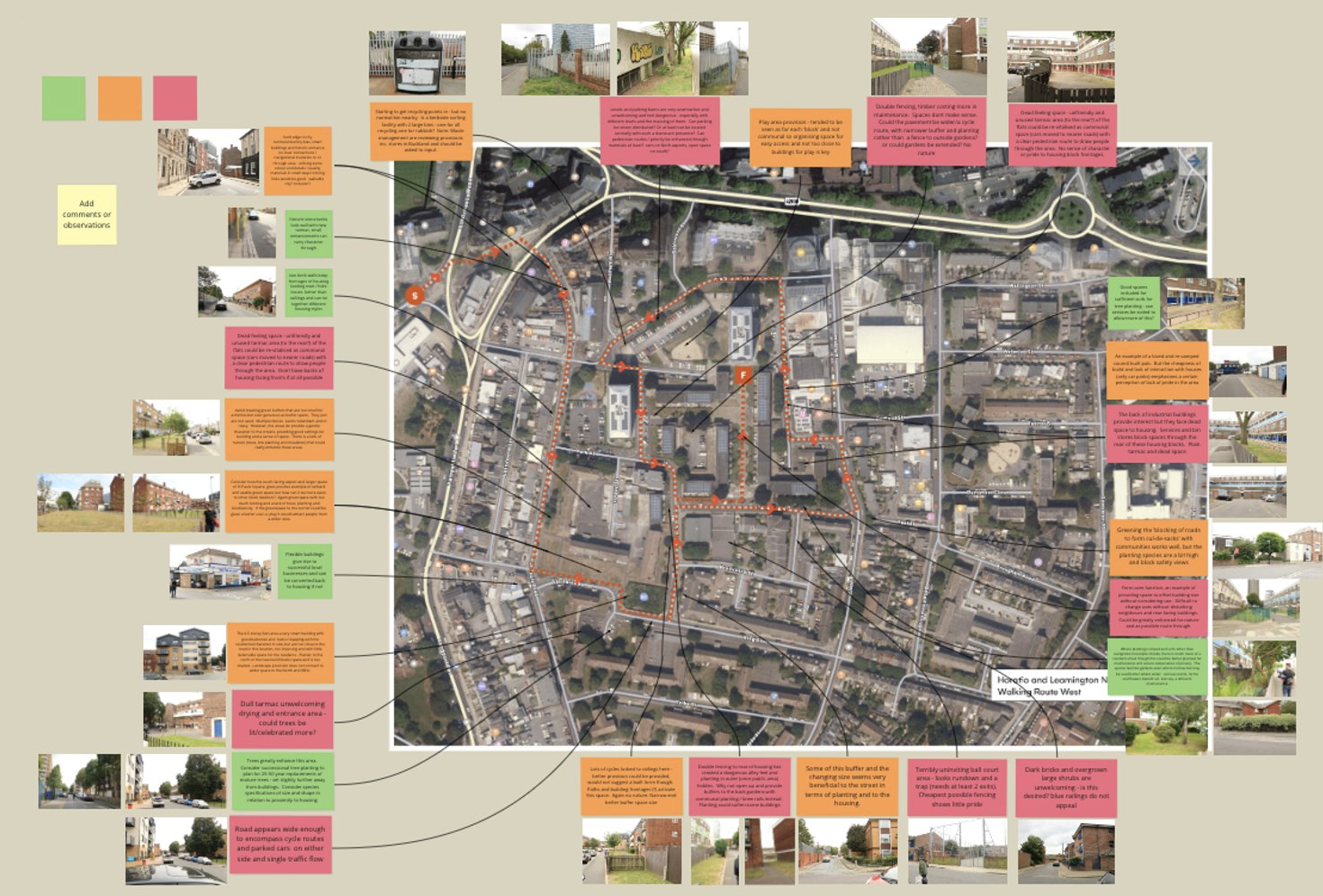Project
Design South East was commissioned by PCC as part of the phase 1 NMDC testing programme to support the council with the process of design coding for estate renewal.
The NMDC requires design codes to be underpinned by stakeholder engagement to ensure that design codes deliver provably popular places. The Horatia and Leamington Estate, a 1960’s estate near Portsmouth city centre, was used as the case study estate for the stakeholder engagement to feed into the design coding process. Its two towers had been identified for demolition, with additional infill development to provide new affordable and social homes. A design team led by Karakusevic Carson Architects (KCA) started work in May 2021 and worked closely with PCC’s Strategic Development team as client to set up a community panel and engage with other local stakeholder groups. An Estate Renewal Working Group was also set up to gather input from officers from across a number of council departments.
Objective
The project had a number of strands and objectives:
- Design code training for PCC’s newly formed cross-departmental Estate Renewal Working Group (ERWG) and other PCC officers to build design skills, capacity and knowledge across departments.
- Design workshops with officers to build understanding of how good design could support them to achieve the council’s overarching objective of supporting the quality of life of its residents through the delivery of well-designed places and of the role that different council departments could play in informing the development of design codes.
- A Place Audit with the ERWG of the Horatia and Leamington Estate through a series of guided ‘walk and talk’ sessions around the estate to understand and capture shared aspirations for the future of the estate.
- A ‘Guide to Design Coding for Estate Renewal’, co-developed with officers (to be adopted by the Council), to underpin the design coding process for future PCC estate renewal programmes or joint guidance with other Local Planning Authorities (LPAs) where PCC owns land outside the council boundary.
Output
Feedback from stakeholder consultation captured the values and aspirations for change of multiple stakeholder groups and council departments. This baseline analysis helped shape the vision for the future of the estate on which the design code would be based.
A ‘Guide to Design Coding for Estate Renewal – Processes and Principles’ was produced which highlights how elements of meaningful community engagement can inform the design coding process to ensure ‘provably popular’ design outcomes. It sets out key considerations relating to the 10 characteristics of well-designed places to provide direction on what aspects to code for in any estate renewal project. Examples of good practice are provided to illustrate what types of design code, guidance or strategy might be produced through the process, informed by the H&L consultation and walkabouts but of relevance to any programme of estate renewal.
Key Findings
- The value of cross-departmental knowledge and information sharing across council departments
Local Authorities have an intrinsic advantage as officers have a vast amount of local knowledge that can positively influence a design code. This is knowledge that the private sector may not always have access to. However, to utilise this knowledge resource, LPAs need different departments to be involved and for those departments to see how contributing could help them achieve their own department’s objectives. To operationalise this, departments need to share knowledge and information (including GIS data) and have an expectation that design code involvement will be part of their workload.
- The importance of appointing an ‘internal champion’
The pilot showed that a design code needs an internal champion within an authority who will be the ‘face’ of the code to build rapport with colleagues, members and the community and to keep the project moving forward.
Image © Portsmouth City Council

